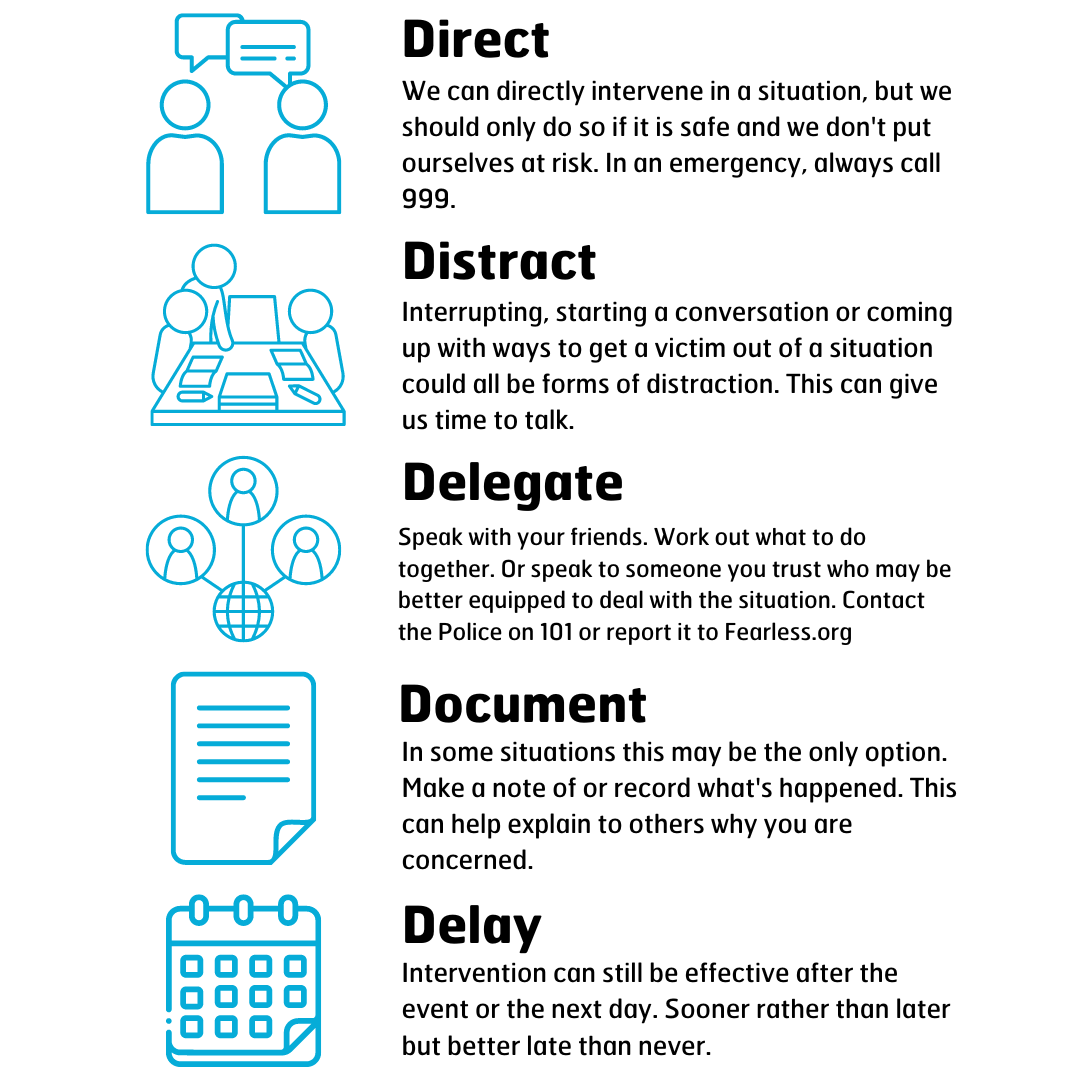Bystander
Approach
Being an active bystander shows to the world the person we are and how we want our community to be.
Being an active bystander
We can all be bystanders. Every day, events happen around us. At some point, we will notice someone at risk, either because of the behaviour of others (such as sexual harassment or bullying) or through their own behaviour (such as carrying a knife). When this happens, we will decide to do or say something, or to simply let it go.
The Bystander Approach encourages us to take action and to prevent harm.
When we intervene, we show to others that the behaviour is unacceptable and that we want to see a change. If such messages are constantly reinforced within our community, we can shift the boundaries of what is considered acceptable and we can work together to reduce crime and to make our community safer. When we do something to prevent harm it sends a signal to others about our beliefs, our values and about who we are.
Becoming an active bystander is not easy. Young people might feel embarrassed to say something in public, they might fear repercussions or simply think that someone else will step in, and these feelings are common. In fact, if more people are around, it is less likely that someone will intervene.
It is important to think about the reasons that explain why young people might not want to become involved. However, it is also important that young people feel empowered and prepared, so that if they do see a crime occurring, they know that they can do something safely, to make a positive difference.
There are five main ways to be an active bystander:


